Data Science with R and Python | R Programming
Loại khoá học: Development
Python and R programming! Learn data science with R & Python with all in one course. You'll learn NumPy, Pandas and more
Mô tả
Welcome to Data Science with R and Python | R Programming course.
Python and r, r and python, python, r programming, python data science, data science, data science with r, r python, python r, data science with r and python, data science course,
Python and R programming! Learn data science with R & Python all in one course. You'll learn NumPy, Pandas, and more
OAK Academy offers highly-rated data science courses that will help you learn how to visualize and respond to new data, as well as develop innovative new technologies. Whether you’re interested in machine learning, data mining, or data analysis, Udemy has a course for you.
Data science is everywhere. Better data science practices are allowing corporations to cut unnecessary costs, automate computing, and analyze markets. Essentially, data science is the key to getting ahead in a competitive global climate. python programming, oak academy, data literacy, python and r programming, data science python, python r data, data science r, python and r for data science, data transformation, python & r, python data science, python for data science, python r programming, data science python, pandas, r data science, r and python programming, r course, data science r and python, NumPy, python r data science, data science in r, data science with python and r, python with r, r studio, programming, r courses, programming for data science
Python instructors at OAK Academy specialize in everything from software development to data analysis and are known for their effective, friendly instruction for students of all levels.
Whether you work in machine learning or finance or are pursuing a career in web development or data science, Python is one of the most important skills you can learn. Python's simple syntax is especially suited for desktop, web, and business applications. Python's design philosophy emphasizes readability and usability. Python was developed upon the premise that there should be only one way (and preferably one obvious way) to do things, a philosophy that has resulted in a strict level of code standardization. The core programming language is quite small and the standard library is also large. In fact, Python's large library is one of its greatest benefits, providing a variety of different tools for programmers suited for many different tasks.
Machine learning and data analysis are big businesses. The former shows up in new interactive and predictive smartphone technologies, while the latter is changing the way businesses reach customers. Learning R from a top-rated OAK Academy instructor will give you a leg up in either industry.R is the programming language of choice for statistical computing. Machine learning, data visualization, and data analysis projects increasingly rely on R for its built-in functionality and tools. And despite its steep learning curve, R pays to know.
Ready for a Data Science career?
Are you curious about Data Science and looking to start your self-learning journey into the world of data?
Are you an experienced developer looking for a landing in Data Science!
In both cases, you are at the right place!
The two most popular programming tools for data science work are Python and R at the moment. It is hard to pick one out of those two amazingly flexible data analytics languages. Both are free and open-source.
R for statistical analysis and Python as a general-purpose programming language. For anyone interested in machine learning, working with large datasets, or creating complex data visualizations, they are absolutely essential.
With my full-stack Data Science course, you will be able to learn R and Python together.
If you have some programming experience, Python might be the language for you. R was built as a statistical language, it suits much better to do statistical learning with R programming.
But do not worry! In this course, you will have a chance to learn both and will decide to which one fits your niche!
Throughout the course's first part, you will learn the most important tools in R that will allow you to do data science. By using the tools, you will be easily handling big data, manipulating it, and producing meaningful outcomes.
Throughout the course's second part, we will teach you how to use Python to analyze data, create beautiful visualizations, and use powerful machine learning algorithms and we will also do a variety of exercises to reinforce what we have learned in this Python for Data Science course.
We will open the door of the Data Science world and will move deeper. You will learn the fundamentals of Python and its beautiful libraries such as Numpy, Pandas, and Matplotlib step by step. Then, we will transform and manipulate real data. For the manipulation, we will use the tidyverse package, which involves dplyr and other necessary packages.
At the end of the course, you will be able to select columns, filter rows, arrange the order, create new variables, and group by and summarize your data simultaneously.
In this course you will learn;
How to use Anaconda and Jupyter notebook,
Fundamentals of Python such as
Datatypes in Python,
Lots of datatype operators, methods, and how to use them,
Conditional concept, if statements
The logic of Loops and control statements
Functions and how to use them
How to use modules and create your own modules
Data science and Data literacy concepts
Fundamentals of Numpy for Data manipulation such as
Numpy arrays and their features
How to do indexing and slicing on Arrays
Lots of stuff about Pandas for data manipulation such as
Pandas series and their features
Dataframes and their features
Hierarchical indexing concept and theory
Groupby operations
The logic of Data Munging
How to deal effectively with missing data effectively
Combining the Data Frames
How to work with Dataset files
And also you will learn fundamentals thing about the Matplotlib library such as
Pyplot, Pylab and Matplotlb concepts
What Figure, Subplot, and Axes are
How to do figure and plot customization
Examining and Managing Data Structures in R
Atomic vectors
Lists
Arrays
Matrices
Data frames
Tibbles
Factors
Data Transformation in R
Transform and manipulate a deal data
Tidyverse and more
Python and r
R programming
data science
data science with r
r python
data science with r and python
python r programming
numpy python
python r data science
python data science
And we will do many exercises. Finally, we will also have 4 different final projects covering all of Python subjects.
What is data science?
We have more data than ever before. But data alone cannot tell us much about the world around us. We need to interpret the information and discover hidden patterns. This is where data science comes in. Data science python uses algorithms to understand raw data. The main difference between data science and traditional data analysis is its focus on prediction. Python data science seeks to find patterns in data and use those patterns to predict future data. It draws on machine learning to process large amounts of data, discover patterns, and predict trends. Data science using python includes preparing, analyzing, and processing data. It draws from many scientific fields, and as a python for data science, it progresses by creating new algorithms to analyze data and validate current methods.
What does a data scientist do?
Data Scientists use machine learning to discover hidden patterns in large amounts of raw data to shed light on real problems. This requires several steps. First, they must identify a suitable problem. Next, they determine what data are needed to solve such a situation and figure out how to get the data. Once they obtain the data, they need to clean the data. The data may not be formatted correctly, it might have additional unnecessary data, it might be missing entries, or some data might be incorrect. Data Scientists must, therefore, make sure the data is clean before they analyze the data. To analyze the data, they use machine learning techniques to build models. Once they create a model, they test, refine, and finally put it into production.
What are the most popular coding languages for data science?
Python for data science is the most popular programming language for data science. It is a universal language that has a lot of libraries available. It is also a good beginner language. R is also popular; however, it is more complex and designed for statistical analysis. It might be a good choice if you want to specialize in statistical analysis. You will want to know either Python or R and SQL. SQL is a query language designed for relational databases. Data scientists deal with large amounts of data, and they store a lot of that data in relational databases. Those are the three most-used programming languages. Other languages such as Java, C++, JavaScript, and Scala are also used, albeit less so. If you already have a background in those languages, you can explore the tools available in those languages. However, if you already know another programming language, you will likely be able to pick up.
How long does it take to become a data scientist?
This answer, of course, varies. The more time you devote to learning new skills, the faster you will learn. It will also depend on your starting place. If you already have a strong base in mathematics and statistics, you will have less to learn. If you have no background in statistics or advanced mathematics, you can still become a data scientist; it will just take a bit longer. Data science requires lifelong learning, so you will never really finish learning. A better question might be, "How can I gauge whether I know enough to become a data scientist?" Challenge yourself to complete data science projects using open data. The more you practice, the more you will learn, and the more confident you will become. Once you have several projects that you can point to as good examples of your skillset as a data scientist, you are ready to enter the field.
How can ı learn data science on my own?
It is possible to learn data science projects on your own, as long as you stay focused and motivated. Luckily, there are a lot of online courses and boot camps available. Start by determining what interests you about data science. If you gravitate to visualizations, begin learning about them. Starting with something that excites you will motivate you to take that first step. If you are not sure where you want to start, try starting with learning Python. It is an excellent introduction to programming languages and will be useful as a data scientist. Begin by working through tutorials or Udemy courses on the topic of your choice. Once you have developed a base in the skills that interest you, it can help to talk with someone in the field. Find out what skills employers are looking for and continue to learn those skills. When learning on your own, setting practical learning goals can keep you motivated.
Does data science require coding?
The jury is still out on this one. Some people believe that it is possible to become a data scientist without knowing how to code, but others disagree. A lot of algorithms have been developed and optimized in the field. You could argue that it is more important to understand how to use the algorithms than how to code them yourself. As the field grows, more platforms are available that automate much of the process. However, as it stands now, employers are primarily looking for people who can code, and you need basic programming skills. The data scientist role is continuing to evolve, so that might not be true in the future. The best advice would be to find the path that fits your skillset.
What skills should a data scientist know?
A data scientist requires many skills. They need a strong understanding of statistical analysis and mathematics, which are essential pillars of data science. A good understanding of these concepts will help you understand the basic premises of data science. Familiarity with machine learning is also important. Machine learning is a valuable tool to find patterns in large data sets. To manage large data sets, data scientists must be familiar with databases. Structured query language (SQL) is a must-have skill for data scientists. However, nonrelational databases (NoSQL) are growing in popularity, so a greater understanding of database structures is beneficial. The dominant programming language in Data Science is Python — although R is also popular. A basis in at least one of these languages is a good starting point. Finally, to communicate findings.
Is data science a good career?
The demand for data scientists is growing. We do not just have data scientists; we have data engineers, data administrators, and analytics managers. The jobs also generally pay well. This might make you wonder if it would be a promising career for you. A better understanding of the type of work a data scientist does can help you understand if it might be the path for you. First and foremost, you must think analytically. Data science from scratch is about gaining a more in-depth understanding of info through data. Do you fact-check information and enjoy diving into the statistics? Although the actual work may be quite technical, the findings still need to be communicated. Can you explain complex findings to someone who does not have a technical background? Many data scientists work in cross-functional teams and must share their results with people with very different backgrounds.
What is python?
Machine learning python is a general-purpose, object-oriented, high-level programming language. Whether you work in artificial intelligence or finance or are pursuing a career in web development or data science, Python bootcamp is one of the most important skills you can learn. Python's simple syntax is especially suited for desktop, web, and business applications. Python's design philosophy emphasizes readability and usability. Python was developed on the premise that there should be only one way (and preferably, one obvious way) to do things, a philosophy that resulted in a strict level of code standardization. The core programming language is quite small and the standard library is also large. In fact, Python's large library is one of its greatest benefits, providing different tools for programmers suited for a variety of tasks.
Python vs. R: What is the Difference?
Python and R are two of today's most popular programming tools. When deciding between Python and R in data science , you need to think about your specific needs. On one hand, Python is relatively easy for beginners to learn, is applicable across many disciplines, has a strict syntax that will help you become a better coder, and is fast to process large datasets. On the other hand, R has over 10,000 packages for data manipulation, is capable of easily making publication-quality graphics, boasts superior capability for statistical modeling, and is more widely used in academia, healthcare, and finance.
What does it mean that Python is object-oriented?
Python is a multi-paradigm language, which means that it supports many data analysis programming approaches. Along with procedural and functional programming styles, Python also supports the object-oriented style of programming. In object-oriented programming, a developer completes a programming project by creating Python objects in code that represent objects in the actual world. These objects can contain both the data and functionality of the real-world object. To generate an object in Python you need a class. You can think of a class as a template. You create the template once, and then use the template to create as many objects as you need. Python classes have attributes to represent data and methods that add functionality. A class representing a car may have attributes like color, speed, and seats and methods like driving, steering, and stopping.
What are the limitations of Python?
Python is a widely used, general-purpose programming language, but it has some limitations. Because Python in machine learning is an interpreted, dynamically typed language, it is slow compared to a compiled, statically typed language like C. Therefore, Python is useful when speed is not that important. Python's dynamic type system also makes it use more memory than some other programming languages, so it is not suited to memory-intensive applications. The Python virtual engine that runs Python code runs single-threaded, making concurrency another limitation of the programming language. Though Python is popular for some types of game development, its higher memory and CPU usage limits its usage for high-quality 3D game development. That being said, computer hardware is getting better and better, and the speed and memory limitations of Python are getting less and less relevant.
How is Python used?
Python is a general programming language used widely across many industries and platforms. One common use of Python is scripting, which means automating tasks in the background. Many of the scripts that ship with Linux operating systems are Python scripts. Python is also a popular language for machine learning, data analytics, data visualization, and data science because its simple syntax makes it easy to quickly build real applications. You can use Python to create desktop applications. Many developers use it to write Linux desktop applications, and it is also an excellent choice for web and game development. Python web frameworks like Flask and Django are a popular choice for developing web applications. Recently, Python is also being used as a language for mobile development via the Kivy third-party library.
What jobs use Python?
Python is a popular language that is used across many industries and in many programming disciplines. DevOps engineers use Python to script website and server deployments. Web developers use Python to build web applications, usually with one of Python's popular web frameworks like Flask or Django. Data scientists and data analysts use Python to build machine learning models, generate data visualizations, and analyze big data. Financial advisors and quants (quantitative analysts) use Python to predict the market and manage money. Data journalists use Python to sort through information and create stories. Machine learning engineers use Python to develop neural networks and artificial intelligent systems.
How do I learn Python on my own?
Python has a simple syntax that makes it an excellent programming language for a beginner to learn. To learn Python on your own, you first must become familiar with the syntax. But you only need to know a little bit about Python syntax to get started writing real code; you will pick up the rest as you go. Depending on the purpose of using it, you can then find a good Python tutorial, book, or course that will teach you the programming language by building a complete application that fits your goals. If you want to develop games, then learn Python game development. If you're going to build web applications, you can find many courses that can teach you that, too. Udemy’s online courses are a great place to start if you want to learn Python on your own.
What is R and why is it useful?
The R programming language was created specifically for statistical programming. Many find it useful for data handling, cleaning, analysis, and representation. R is also a popular language for data science projects. Much of the data used for data science can be messy and complex. The programming language has features and libraries available geared toward cleaning up unorganized data and making complex data structures easier to handle that can't be found in other languages. It also provides powerful data visualization tools to help data scientists find patterns in large sets of data and present the results in expressive reports. Machine learning is another area where the R language is useful. R gives developers an extensive selection of machine learning libraries that will help them find trends in data and predict future events.
What careers use R?
R is a popular programming language for data science, business intelligence, and financial analysis. Academic, scientific, and non-profit researchers use the R language to glean answers from data. R is also widely used in market research and advertising to analyze the results of marketing campaigns and user data. The language is used in quantitative analysis, where its data analysis capabilities give financial experts the tools they need to manage portfolios of stocks, bonds, and other assets. Data scientists use R in many industries to turn data into insights and predict future trends with its machine learning capabilities. Data analysts use R to extract data, analyze it, and turn it into reports that can help enterprises make better business decisions. Data visualization experts use R to turn data into visually appealing graphs and charts.
Is R difficult to learn?
Whether R is hard to learn depends on your experience. After all, R is a programming language designed for mathematicians, statisticians, and business analysts who may have no coding experience. For some beginning users, it is relatively simple to learn R. It can have a learning curve if you are a business analyst who is only familiar with graphical user interfaces since R is a text-based programming language. But compared to other programming languages, users usually find R easier to understand. R also may have an unfamiliar syntax for programmers who are used to other programming languages, but once they learn the syntax, the learning process becomes more straightforward. Beginners will also find that having some knowledge of mathematics, statistics, and probabilities makes learning R easier.
Python vs. R: What is the Difference?
Python and R are two of today's most popular programming tools. When deciding between Python and R, you need to think about your specific needs. On one hand, Python is relatively easy for beginners to learn, is applicable across many disciplines, has a strict syntax that will help you become a better coder, and is fast to process large datasets. On the other hand, R has over 10,000 packages for data manipulation, is capable of easily making publication-quality graphics, boasts superior capability for statistical modeling, and is more widely used in academia, healthcare, and finance.
What does it mean that Python is object-oriented?
Python is a multi-paradigm language, which means that it supports many programming approaches. Along with procedural and functional programming styles, Python also supports the object-oriented style of programming. In object-oriented programming, a developer completes a programming project by creating Python objects in code that represent objects in the actual world. These objects can contain both the data and functionality of the real-world object. To generate an object in Python you need a class. You can think of a class as a template. You create the template once, and then use the template to create as many objects as you need. Python classes have attributes to represent data and methods that add functionality. A class representing a car may have attributes like color, speed, and seats and methods like driving, steering, and stopping. The concept of combining data with functionality in an object is called encapsulation, a core concept in the object-oriented programming paradigm.
Why would you want to take this course?
Our answer is simple: The quality of teaching.
When you enroll, you will feel the OAK Academy's seasoned instructors' expertise.
Fresh Content
It’s no secret how technology is advancing at a rapid rate and it’s crucial to stay on top of the latest knowledge. With this course, you will always have a chance to follow the latest data science trends.
Video and Audio Production Quality
All our content is created/produced as high-quality video/audio to provide you the best learning experience.
You will be,
Seeing clearly
Hearing clearly
Moving through the course without distractions
You'll also get:
Lifetime Access to The Course
Fast & Friendly Support in the Q&A section
Udemy Certificate of Completion Ready for Download
Dive in now!
Data Science with R and Python | R Programming
We offer full support, answering any questions.
See you in the course!
Bạn sẽ học được gì
R programming, R and Python in the same course. You decide which one you would go for!
R was built as a statistical language, it suits much better to do statistical learning and R is a statistical programming software favoured by many academia
If you have some programming experience, Python might be the language for you. R programming
Since R was built as a statistical language, it suits much better to do statistical learning. r programming
You will learn R and Python from scratch. Python R programming
Learn Fundamentals of Python for effectively using Data Science
Data Manipulation, Data Analysis, Data analysis with pandas
Learn how to handle with big data, R programming, R
Learn how to manipulate the data, Python Data Science
Learn how to produce meaningful outcomes. Python Numpy
Learn Fundamentals of Python for effectively using Data Science
Numpy arrays, Numpy python
Series and Features with Python data science
Combining Dataframes, Data Munging and how to deal with Missing Data
How to use Matplotlib library and start to journey in Data Visualization
Also, why you should learn Python and Pandas Library
Learn Data Science with Python
Handle wide variety of data science challenges
Select columns and filter rows with python
Arrange the order and create new variables
Create, subset, convert or change any element within a vector or data frame
Transform and manipulate an existing and real data.
OAK offers highly-rated data science courses that will help you learn how to visualize and respond to new data, as well as develop innovative new technologies
Whether you’re interested in machine learning, data mining, or data analysis, Udemy has a course for you.
Data science is everywhere. Better data science practices are allowing corporations to cut unnecessary costs, automate computing, and analyze markets.
Data science is the key to getting ahead in a competitive global climate.
Data science uses algorithms to understand raw data. The main difference between data science and traditional data analysis is its focus on prediction.
Data Scientists use machine learning to discover hidden patterns in large amounts of raw data to shed light on real problems.
Python is the most popular programming language for data science. It is a universal language that has a lot of libraries available.
Data science requires lifelong learning, so you will never really finish learning.
It is possible to learn data science on your own, as long as you stay focused and motivated. Luckily, there are a lot of online courses and boot camps available
Some people believe that it is possible to become a data scientist without knowing how to code, but others disagree.
A data scientist requires many skills. They need a strong understanding of statistical analysis and mathematics, which are essential pillars of data science.
The demand for data scientists is growing. We do not just have data scientists; we have data engineers, data administrators, and analytics managers.
The R programming language was created specifically for statistical programming. Many find it useful for data handling, cleaning, analysis, and representation.
R is a popular programming language for data science, business intelligence, and financial analysis. Academic, scientific, and non-profit researchers use the R
Whether R is hard to learn depends on your experience. After all, R is a programming language designed for mathematicians, statisticians, and business analysts
Yêu cầu
- No prior python and r knowledge is required
- Free software and tools used during the course
- Basic computer knowledge
- Desire to learn data science
- Nothing else! It’s just you, your computer and your ambition to get started today
- Curiosity for r programming
- Desire to learn Python
- Desire to work on r and python
- Desire to learn full stack data science with python, python and r, r programming, data science with r, r python,
- Desire to learn r and python
- Desire to data science r and python
- Desire to learn python r data science
Nội dung khoá học
Viết Bình Luận
Khoá học liên quan

Đăng ký get khoá học Udemy - Unica - Gitiho giá chỉ 50k!
Get khoá học giá rẻ ngay trước khi bị fix.

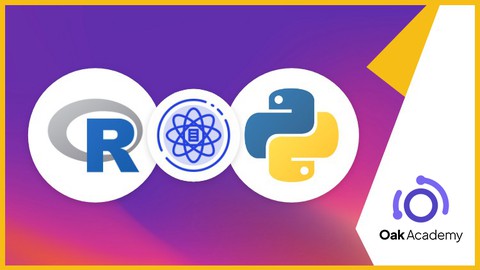

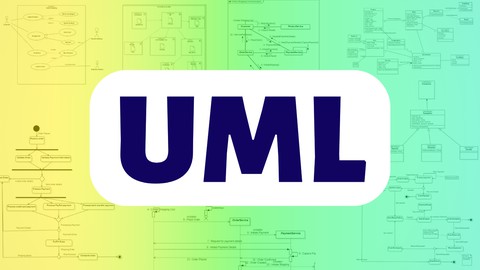
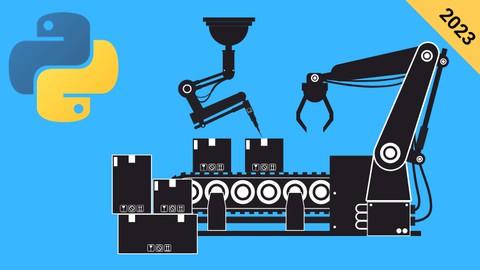


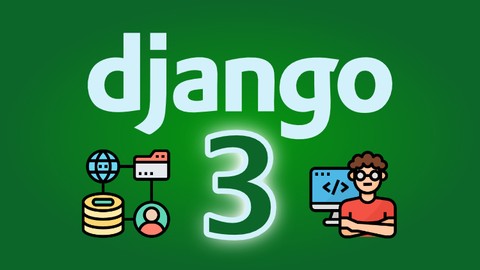
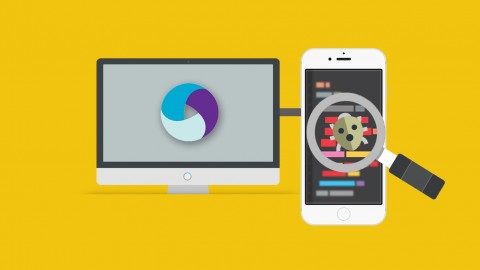




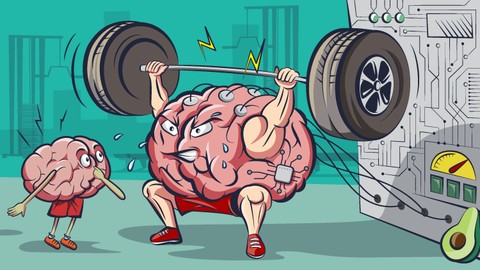

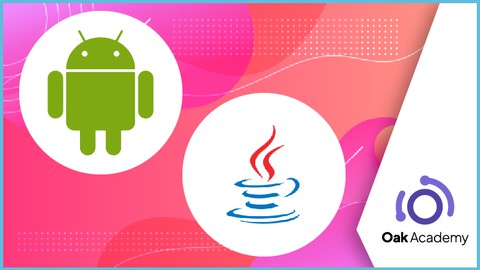


Đánh giá của học viên
Bình luận khách hàng